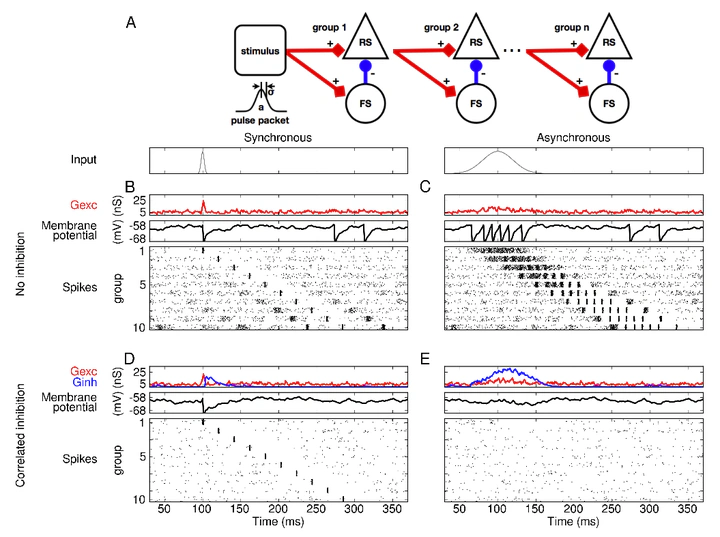Functional consequences of correlated excitatory and inhibitory conductances in cortical networks

Abstract
Neurons in the neocortex receive a large number of excitatory and inhibitory synaptic inputs. Excitation and inhibition dynamically balance each other, with inhibition lagging excitation by only few milliseconds. To characterize the functional consequences of such correlated excitation and inhibition, we studied models in which this correlation structure is induced by feedforward inhibition (FFI). Simple circuits show that an effective FFI changes the integrative behavior of neurons such that only synchronous inputs can elicit spikes, causing the responses to be sparse and precise. Further, effective FFI increases the selectivity for propagation of synchrony through a feedforward network, thereby increasing the stability to background activity. Last, we show that recurrent random networks with effective inhibition are more likely to exhibit dynamical network activity states as have been observed in vivo. Thus, when a feedforward signal path is embedded in such recurrent network, the stabilizing effect of effective inhibition creates an suitable substrate for signal propagation. In conclusion, correlated excitation and inhibition support the notion that synchronous spiking may be important for cortical processing.
